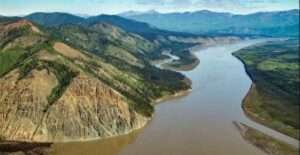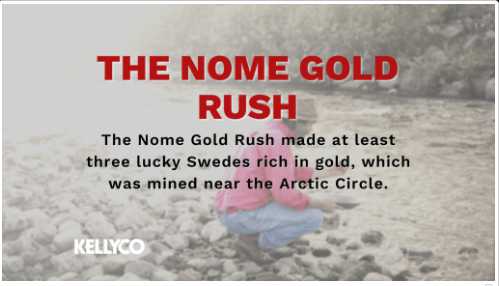Work is part of collaborative and partnership-driven Restoration Landscape strategy

ANCHORAGE, Alaska — The Bureau of Land Management, in partnership with the Salcha-Delta Soil and Water Conservation District and Trout Unlimited, are restoring mining-impacted streams along the upper Yukon River watershed. Projects will improve water quality and fish habitat along Nome and Wade Creeks as part of a long-term restoration strategy to rehabilitate thousands of feet of stream channel and associated fish habitat within and adjacent to the Birch Creek and the Fortymile Wild and Scenic Rivers Restoration Landscape.
Historic mining activities have degraded fish habitats in both Nome and Wade Creeks. Restoration of these streams will improve habitat quality and riparian health, supporting regional recreation and subsistence uses.
“Restoration of Nome and Wade Creeks will improve watershed health across the Norton Sound-Yukon-Kuskokwim region and help mitigate disturbance flood events,” said Fairbanks District Manager Geoff Beyersdorf. “This work is an important next step in rehabilitating this historic landscape, so it can continue to support healthy ecosystems and community needs.”
This project furthers the work of the Department of the Interior Gravel to Gravel Keystone Initiative, an investment of more than $65 million over the next four years from President Biden’s Bipartisan Infrastructure Law, which seeks to improve the resilience of ecosystems and salmon in Alaska’s Yukon, Kuskokwim and Norton Sound region.
Restoration work began in June and is expected to continue through July, starting with stream restoration on Wade Creek along the Taylor Highway north of Chicken, with additional work planned later this summer on Nome Creek in the White Mountains National Recreation Area.
This announcement follows on the heels of the BLM’s selection of the Birch Creek and Fortymile Wild and Scenic Rivers Restoration Landscape as part of a larger strategy to infuse $161 million in funding from President Biden’s Inflation Reduction Act in 21 Restoration Landscapes across 11 states. BLM will invest $5 million in this landscape over the next 5-10 years to improve ecosystem resilience, restore salmon habitat, and help address the legacy of degradation from placer gold mining.
-BLM- [content id=”79272″]








